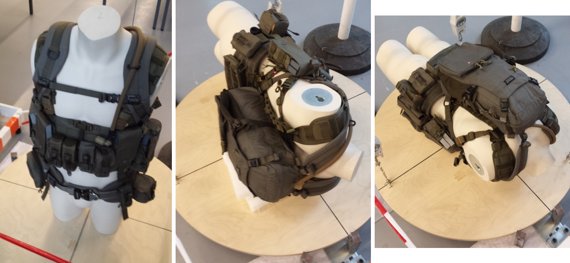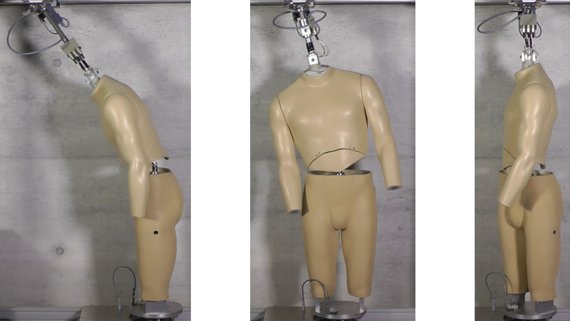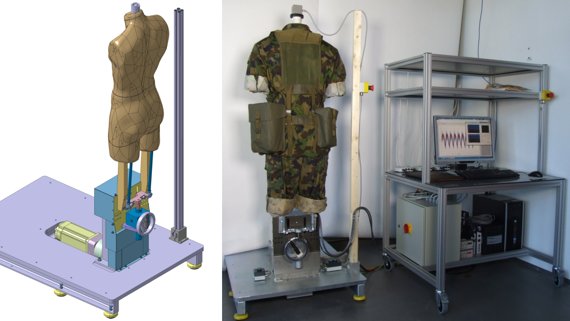Pressure Dummies
Different test methods are used to evaluate load-bearing systems. On the one hand, the simulators / test dummies in the laboratory are like "Beda" for determining the movement limitation and "Nick" for the study of the pressure distribution. On the other hand, there are also tools such as the trifliare pendulum for the determination of the center of gravity or a simulation model to determine the risk of injury, based on the measured values with the simulators.
Trifilar pendulum

Movement limitations (Beda)
- forward
- sideward and
- rotation

Pressure distribution (Nick)
The most complex test system is "Nick" to determine the pressure distribution. The system consists of an instrumented dummy that simulates a walking movement in which it can move up and down.
In addition to the drive, several measuring systems are integrated: pressure sensors (Tekscan), relative movement (Polhemus), forces and torques (AMTI) as well as belt tension.
The pressure distribution is recorded with 6 Tekscan sensors. Each sensor has an active matrix area of 76.2 mm x 203.2 mm on the total of 96 single sensors.
To determine the relative movement we use the Polhemus Liberty system. It consists of a transmitter and up to 8 sensors which measure their position and orientation in the three-dimensional space.
To determine the forces and torques, 2 sensors are installed in the Manikin; So the total load and the load on the shoulder or upper body can be determined.
The detection of the belt tension is based on a sensor which registers the deformation of a cut tube piece. A strain gage was applied to the tube to detect the slightest deformation.

